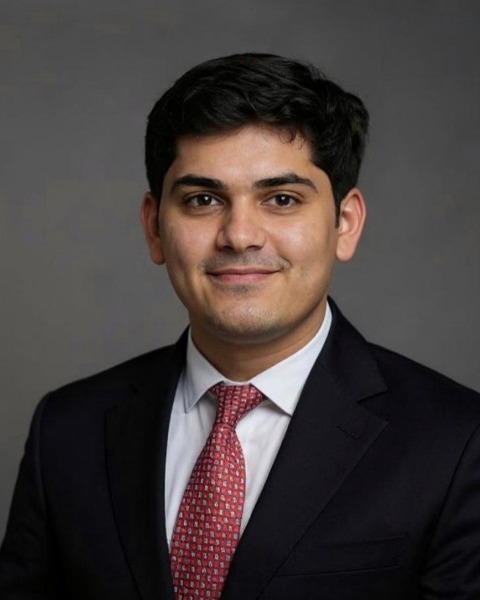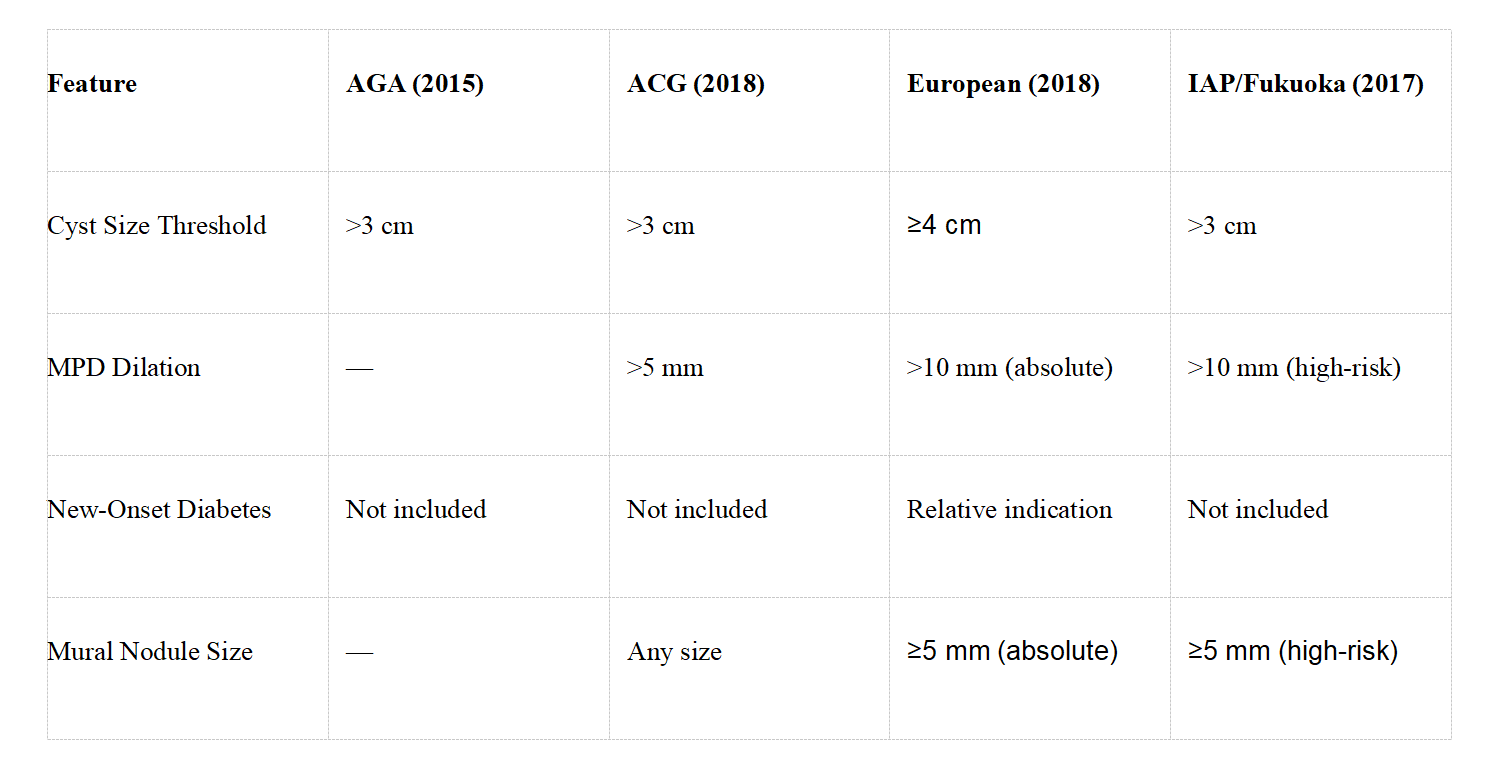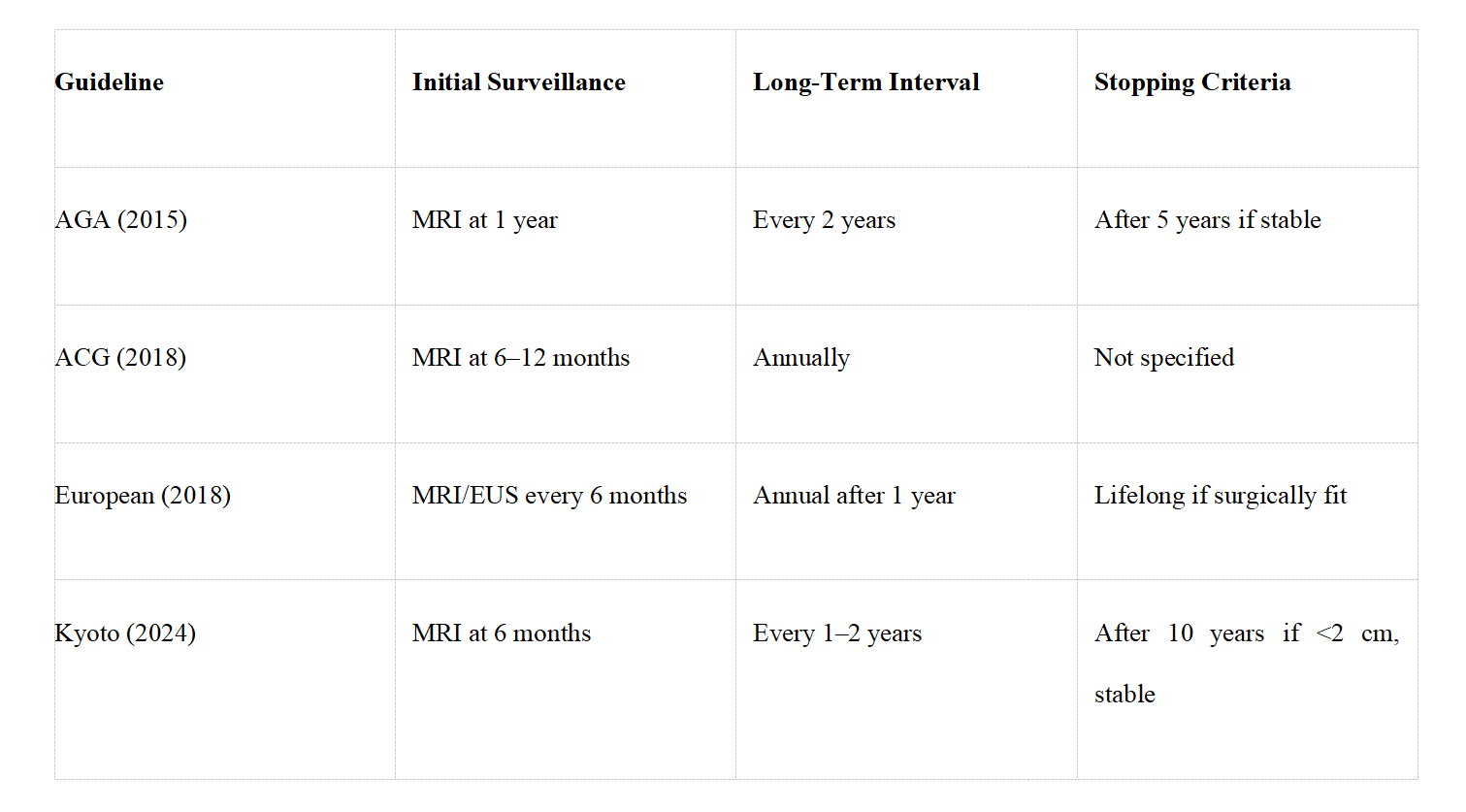Monday Poster Session
Category: Biliary/Pancreas
P2193 - Comparative Systematic Review of International Guidelines for Pancreatic Cyst Surveillance: Inconsistencies and Evidence Gaps
Monday, October 27, 2025
10:30 AM - 4:00 PM PDT
Location: Exhibit Hall

Pranay Marlecha, MBBS
Kempegowda Institute of Medical Sciences
Bengaluru, Karnataka, India
Presenting Author(s)
Pranay Marlecha, MBBS1, Rohan Singhal, MBBS2, Dheerja Sachdeva, MBBS3, Salma Younas, PharmD4, Sweta Sahu, MBBS5, Simardeep Singh, MBBS6, Aishwar Dixit, MBBS7
1Kempegowda Institute of Medical Sciences, Bengaluru, Karnataka, India; 2Atal Bihari Vajpayee Institute of Medical Sciences and Dr. Ram Manohar Lohia Hospital, New Delhi, Gurgaon, Haryana, India; 3Hamdard Institute of Medical Sciences and Research, New Delhi, Karnal, Haryana, India; 4University of the Punjab, Lahore, Punjab, Pakistan; 5J.J.M. Medical College, Bhubaneswar, Orissa, India; 6MedStar Georgetown University Hospital, Baltimore, MD; 7Baba Ramdev Das Medical College, Gorakhpur, Uttar Pradesh, India
Introduction: Pancreatic cystic lesions (PCLs) are increasingly detected incidentally due to the widespread use of cross-sectional imaging, with a reported prevalence of 13%–18% in adults. Surveillance of these lesions is critical for identifying those with malignant potential. However, multiple international guidelines offer conflicting recommendations regarding management. This study aims to compare surveillance strategies across major guidelines—including those from the American Gastroenterological Association (AGA, 2015), American College of Gastroenterology (ACG, 2018), American College of Radiology (ACR, 2017), International Association of Pancreatology (IAP/Fukuoka, 2017), European Study Group (2018), and Kyoto (2024)—to identify inconsistencies and evidence gaps.
Methods: A systematic literature search (PubMed/Embase/Cochrane through April 2025) identified society guidelines. Parameters compared included: (1) size thresholds for surgery, (2) high-risk/worrisome features, (3) surveillance intervals and duration, (4) imaging modalities, and (5) stopping criteria.
Results: Significant variations were observed across international guidelines.
For surgical referral, size thresholds for branch-duct IPMN resection ranged from >3 cm (AGA, ACG) to ≥4 cm (European), while main pancreatic duct dilation criteria differed substantially( >5 mm in ACG vs. >10 mm in Fukuoka). Surveillance protocols showed
marked heterogeneity: initial intervals varied from 6 months (European) to 2 years (AGA for cysts < 3 cm), and stopping criteria conflicted sharply (discontinuation after 5 stable years (AGA) versus lifelong surveillance
(European)). Risk stratification inconsistencies were prominent, exemplified by new-onset diabetes being considered a relative surgical indication only in European guidelines. Imaging recommendations diverged despite consensus
on MRI for surveillance; EUS-FNA indications ranged from requiring ≥2 high-risk features (AGA) to triggering after any single worrisome feature (Fukuoka).
Discussion: Major guidelines exhibit substantial heterogeneity in PCL surveillance, driven by low-quality evidence and differing interpretations of existing data. Standardization and prospective studies, particularly on cyst growth rates, molecular biomarkers, and long-term outcomes, are urgently needed to optimize risk stratification and reduce unnecessary interventions.

Figure: Table 1: Surgical Referral Criteria Across Guidelines

Figure: Table 2: Surveillance Intervals for Cysts 1-2 cm Without High-Risk Features
Disclosures:
Pranay Marlecha indicated no relevant financial relationships.
Rohan Singhal indicated no relevant financial relationships.
Dheerja Sachdeva indicated no relevant financial relationships.
Salma Younas indicated no relevant financial relationships.
Sweta Sahu indicated no relevant financial relationships.
Simardeep Singh indicated no relevant financial relationships.
Aishwar Dixit indicated no relevant financial relationships.
Pranay Marlecha, MBBS1, Rohan Singhal, MBBS2, Dheerja Sachdeva, MBBS3, Salma Younas, PharmD4, Sweta Sahu, MBBS5, Simardeep Singh, MBBS6, Aishwar Dixit, MBBS7. P2193 - Comparative Systematic Review of International Guidelines for Pancreatic Cyst Surveillance: Inconsistencies and Evidence Gaps, ACG 2025 Annual Scientific Meeting Abstracts. Phoenix, AZ: American College of Gastroenterology.
1Kempegowda Institute of Medical Sciences, Bengaluru, Karnataka, India; 2Atal Bihari Vajpayee Institute of Medical Sciences and Dr. Ram Manohar Lohia Hospital, New Delhi, Gurgaon, Haryana, India; 3Hamdard Institute of Medical Sciences and Research, New Delhi, Karnal, Haryana, India; 4University of the Punjab, Lahore, Punjab, Pakistan; 5J.J.M. Medical College, Bhubaneswar, Orissa, India; 6MedStar Georgetown University Hospital, Baltimore, MD; 7Baba Ramdev Das Medical College, Gorakhpur, Uttar Pradesh, India
Introduction: Pancreatic cystic lesions (PCLs) are increasingly detected incidentally due to the widespread use of cross-sectional imaging, with a reported prevalence of 13%–18% in adults. Surveillance of these lesions is critical for identifying those with malignant potential. However, multiple international guidelines offer conflicting recommendations regarding management. This study aims to compare surveillance strategies across major guidelines—including those from the American Gastroenterological Association (AGA, 2015), American College of Gastroenterology (ACG, 2018), American College of Radiology (ACR, 2017), International Association of Pancreatology (IAP/Fukuoka, 2017), European Study Group (2018), and Kyoto (2024)—to identify inconsistencies and evidence gaps.
Methods: A systematic literature search (PubMed/Embase/Cochrane through April 2025) identified society guidelines. Parameters compared included: (1) size thresholds for surgery, (2) high-risk/worrisome features, (3) surveillance intervals and duration, (4) imaging modalities, and (5) stopping criteria.
Results: Significant variations were observed across international guidelines.
For surgical referral, size thresholds for branch-duct IPMN resection ranged from >3 cm (AGA, ACG) to ≥4 cm (European), while main pancreatic duct dilation criteria differed substantially( >5 mm in ACG vs. >10 mm in Fukuoka). Surveillance protocols showed
marked heterogeneity: initial intervals varied from 6 months (European) to 2 years (AGA for cysts < 3 cm), and stopping criteria conflicted sharply (discontinuation after 5 stable years (AGA) versus lifelong surveillance
(European)). Risk stratification inconsistencies were prominent, exemplified by new-onset diabetes being considered a relative surgical indication only in European guidelines. Imaging recommendations diverged despite consensus
on MRI for surveillance; EUS-FNA indications ranged from requiring ≥2 high-risk features (AGA) to triggering after any single worrisome feature (Fukuoka).
Discussion: Major guidelines exhibit substantial heterogeneity in PCL surveillance, driven by low-quality evidence and differing interpretations of existing data. Standardization and prospective studies, particularly on cyst growth rates, molecular biomarkers, and long-term outcomes, are urgently needed to optimize risk stratification and reduce unnecessary interventions.

Figure: Table 1: Surgical Referral Criteria Across Guidelines

Figure: Table 2: Surveillance Intervals for Cysts 1-2 cm Without High-Risk Features
Disclosures:
Pranay Marlecha indicated no relevant financial relationships.
Rohan Singhal indicated no relevant financial relationships.
Dheerja Sachdeva indicated no relevant financial relationships.
Salma Younas indicated no relevant financial relationships.
Sweta Sahu indicated no relevant financial relationships.
Simardeep Singh indicated no relevant financial relationships.
Aishwar Dixit indicated no relevant financial relationships.
Pranay Marlecha, MBBS1, Rohan Singhal, MBBS2, Dheerja Sachdeva, MBBS3, Salma Younas, PharmD4, Sweta Sahu, MBBS5, Simardeep Singh, MBBS6, Aishwar Dixit, MBBS7. P2193 - Comparative Systematic Review of International Guidelines for Pancreatic Cyst Surveillance: Inconsistencies and Evidence Gaps, ACG 2025 Annual Scientific Meeting Abstracts. Phoenix, AZ: American College of Gastroenterology.
